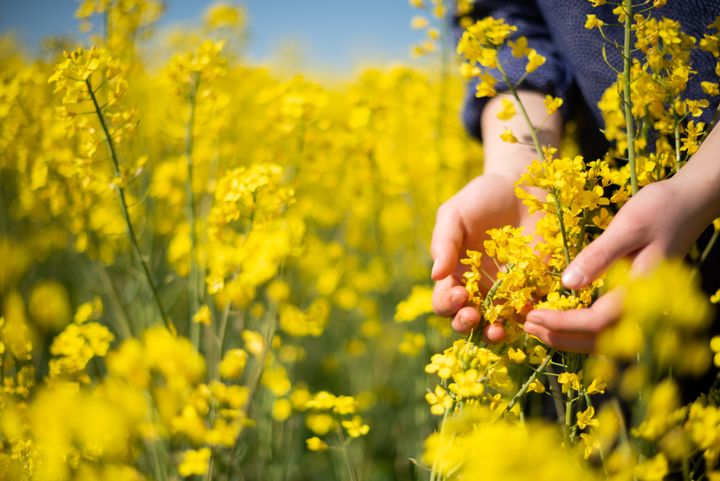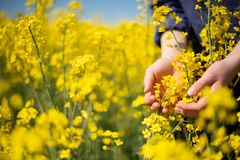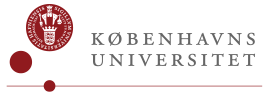Researchers close to unleashing rapeseed’s protein power for human consumption

Yellow flower carpeted fields are a sure sign of summer. In Denmark, more than 200,000 hectares of rapeseed are now cultivated for use as edible and industrial oils, and as a protein supplement for animal feed – but not as a direct food source for humans. While the rapeseed plant’s high content of bitter defensive substances keep disease and herbivores at bay, they also make the plant inedible for humans.
Now, a team of scientific researchers from the University of Copenhagen’s Department of Plant and Environmental Sciences has identified the proteins that help store the bitter substances in seeds of thale cress, a model plant and close relative of rapeseed. The new research result has just been published in the renowned scientific journal Nature
The knowledge can be used to remove these proteins and in doing so, rapreseed’s bitter taste, which offers a wealth of opportunity. Indeed, half of the EU's locally-grown plant proteins already come from rapeseed plants.
"The climate crisis demands that we reduce meat consumption and eat more plants, which is where rapeseed has great potential as a new source of plant protein in the green transition. Our latest research results bring us a critical step closer to making full use of rapeseed," says Professor Barbara Ann Halkier, who led the research.
Substances in wasabi and mustard are gone
Rapeseed’s bitter defensive substances are called glucosinolates and are best known as the spicy flavors in wasabi and mustard. As a result, the so-called rapeseed cake, which is the remains of the seeds after the oil has been squeezed out, has only been used in limited quantities as feed for pigs and chickens, despite its staggering 30-40 percent protein content.
The researchers succeeded in removing the bitter defensive substances by identifying the three proteins in the plant responsible for transporting the substances into its seeds. The new knowledge makes it possible to prevent the accumulation of these substances in the seed by removing the proteins by way of a technology called 'transport engineering'. As such, the defensive substances remain in all other parts of the plant, allowing it to continue to defend itself.
"Our research demonstrates that the connection – a kind of umbilical cord – that exists between the seeds and surrounding fruit shell, is a cell factory for the production of glucosinolates which end up in the seeds. After all, plants are well rooted in soil and cannot just walk away when there is danger. They need to produce a multitude of defensive substances to protect themselves from attacks by disease and herbivores. Our discovery has allowed us to find a way to eliminate these bitter substances from the seeds," says Dr. Deyang Xu, lead author of the new study.
A breakthrough ten years in the making
So far, the researchers have shown that their method works in thale cress (Arabidobsis thaliana), a model plant closely related to the rapeseed plant.
"The next task is to show that we can transfer our result from Arabidopsis to the closely related rapeseed plant, which we are now working on," says Dr. Xu.
The research that led to this discovery is the result of a long haul made possible by a 10-year grant from the Danish National Research Foundation to the DynaMo Centre at the Faculty of Science’s Department of Plant and Environmental Sciences.
"I cannot stress enough how important this long-term grant has been for us to be able to land this major research result. It has really given us time to immerse ourselves in the details and geek out, which has paid off," says Barbara Ann Halkier.
Facts about plant defenses:
Plants of the cruciferous family are characterized by being able to produce a group of defense substances called glucosinolates. These substances give plants such as broccoli, cabbage, arugula and rapeseed a strong and bitter taste that scares off herbivores and diseases.
To protect their offspring, thale cress and closely related rapeseed plants fill their seeds with glucosinolates so that the seeds and small seedlings can defend themselves against insects and other enemies. As the seeds cannot synthesize glucosinolates themselves, the substances must be transported from the mother plant to the seeds.
Some glucosinolates are healthy, such as those in broccoli and other cabbages. However, glucosinolates in the seeds of the rapeseed plant are unhealthy.
Contact:
Barbara Ann Halkier
Professor
Department of Plant and Environmental Sciences
University of Copenhagen
Mobile/phone:
Email bah@plen.ku.dk
Michael Skov Jensen
Journalist and team coordinator
The Faculty of Science
University of Copenhagen
Mobile: +45 93 56 58 97
msj@science.ku.dk
Contacts
Barbara Ann Halkier
Professor
Department of Plant and Environmental Sciences
University of Copenhagen
Mobile:+45 40 18 22 60
Email bah@plen.ku.dk
Michael Skov Jensen
Journalist and team coordinator
The Faculty of Science
University of Copenhagen
Mobile: +45 93 56 58 97
msj@science.ku.dk
Images

About Københavns Universitet - Det Natur- og Biovidenskabelige Fakultet
 Københavns Universitet - Det Natur- og Biovidenskabelige Fakultet
Københavns Universitet - Det Natur- og Biovidenskabelige FakultetBülowsvej 17
1870 Frederiksberg C
35 33 28 28https://science.ku.dk/
Det Natur- og Biovidenskabelige Fakultet på Københavns Universitet – SCIENCE – er landets største naturvidenskabelige forsknings- og uddannelsesinstitution.
Fakultetets væsentligste opgave er at bidrage til løsning af de store udfordringer, som vi står overfor i en verden under hastig forandring med øget pres på bl.a. naturressourcer og markante klimaforandringer - både nationalt og globalt.
Subscribe to releases from Københavns Universitet - Det Natur- og Biovidenskabelige Fakultet
Subscribe to all the latest releases from Københavns Universitet - Det Natur- og Biovidenskabelige Fakultet by registering your e-mail address below. You can unsubscribe at any time.
Latest releases from Københavns Universitet - Det Natur- og Biovidenskabelige Fakultet
Nyt studie peger på Skagerrak som et slags ”fritidshjem” for den gådefulde grønlandshaj9.7.2025 09:00:00 CEST | Pressemeddelelse
Grønlandshajen – verdens længstlevende hvirveldyr – forbindes oftest med kolde arktiske vande. Et nyt internationalt studie ledt af forskere fra Grønlands Naturinstitut og Københavns Universitet viser dog, at Skagerrak sandsynligvis fungerer som opvækstområde for unge grønlandshajer. Studiet peger også på at grønlandshajer slet ikke fødes i hverken Grønland eller andre steder i Arktis.
Old aerial photos give scientists a new tool to predict sea level rise3.7.2025 08:00:00 CEST | Press release
Researchers from the University of Copenhagen have gained unique insight into the mechanisms behind the collapse of Antarctic ice shelves, which are crucial for sea level rise in the Northern Hemisphere. The discovery of old aerial photos has provided an unparalleled dataset that can improve predictions of sea level rise and how we should prioritise coastal protection and other forms of climate adaptation.
Gamle luftfotos giver forskere nyt redskab til at forudsige havstigninger3.7.2025 08:00:00 CEST | Pressemeddelelse
Forskere fra Københavns Universitet har fået unik adgang til at forstå mekanismerne bag antarktiske ishylders kollaps, som er afgørende for havstigninger på den nordlige halvkugle. Et fund af gamle luftfotos har skabt et enestående datasæt, som kan forbedre vores forudsigelser af hvor meget havene stiger, og vores prioritering af kystsikring og andre klimatilpasninger.
Ny institutleder på IFRO: ”Faglighed og fællesskab går hånd i hånd”1.7.2025 10:49:17 CEST | Pressemeddelelse
Per Svejstrup er fra 1. august ansat som institutleder på Institut for Fødevare- og Ressourceøkonomi (IFRO). Den kommende leder træder ind i rollen med stor respekt for IFRO's faglige og kollegiale kultur med klare ambitioner for fremtiden.
Dangerous Variant of Salmonella Still Not Eradicated – Researchers Point to the Solutions1.7.2025 09:53:23 CEST | Press release
The infectious and multi-resistant cattle disease Salmonella Dublin can be fatal to both humans and animals and causes significant losses for farmers. Although Denmark has attempted to eradicate the disease since 2008, it has not yet succeeded. A study from the University of Copenhagen points to possible reasons – and the necessary solutions.
In our pressroom you can read all our latest releases, find our press contacts, images, documents and other relevant information about us.
Visit our pressroom